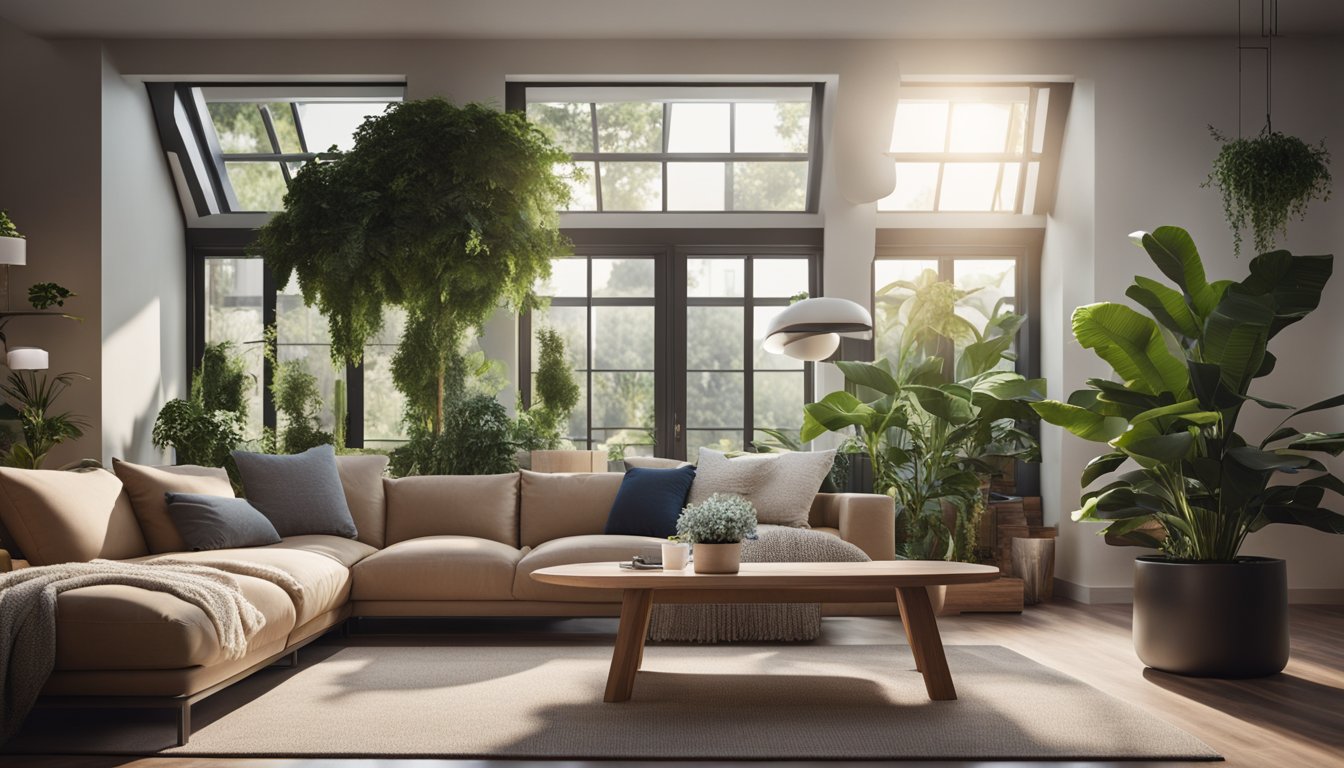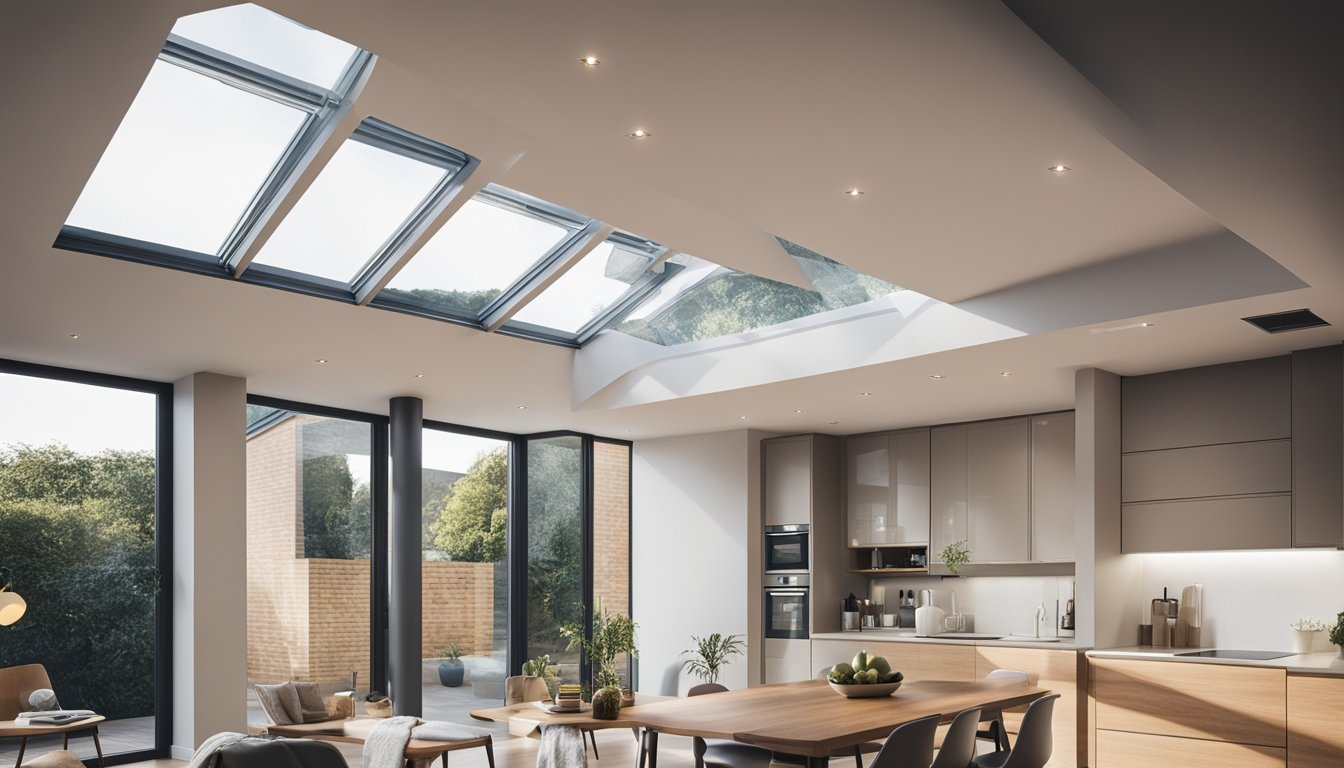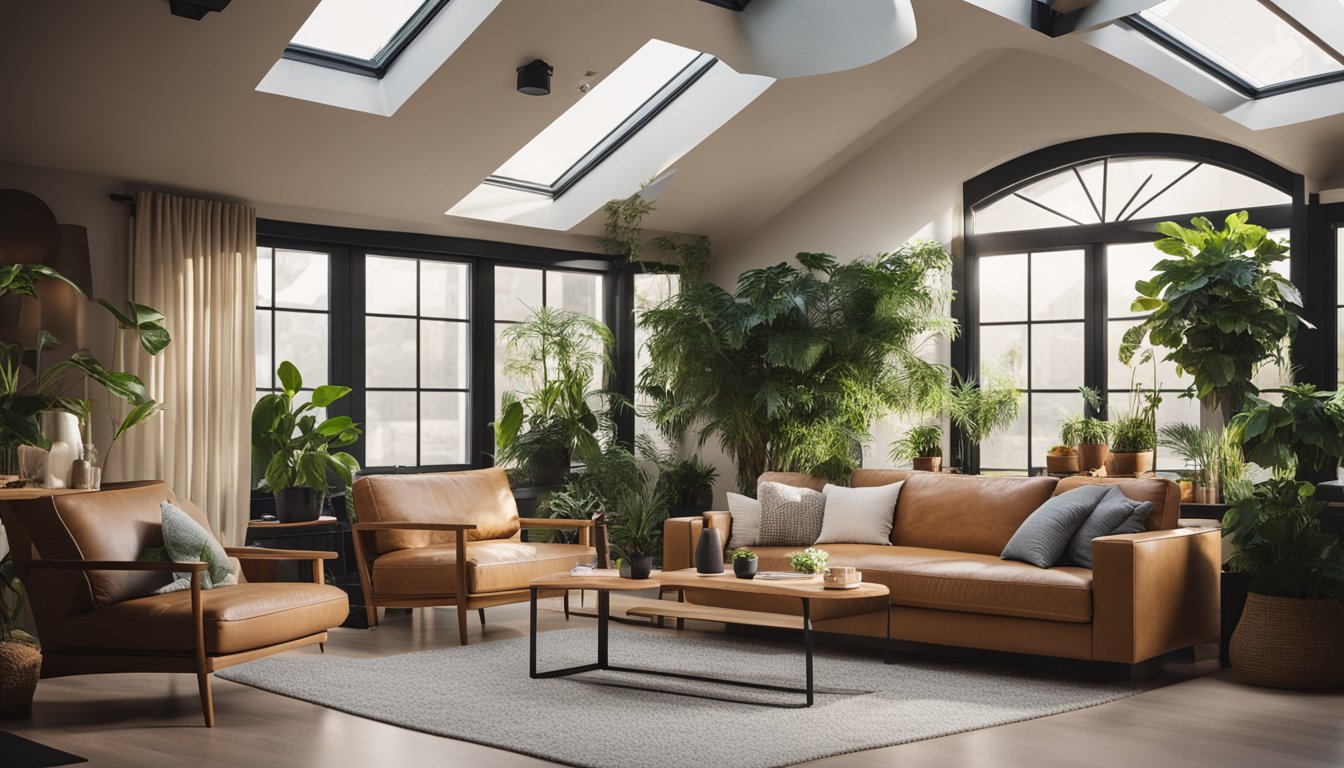Late updated: 30 Mar 2025 09:03
Written by: Oliver Bennett
The Benefits Of Installing A Roof Skylight In Your UK Home: Enhancing Light and Value
Installing a roof skylight in your UK home is a transformative decision that can enhance more than just aesthetics. A skylight brings natural light into your living space, reducing the need for artificial lighting during the day. This can lead to lower energy bills, creating both a cost-saving and environmentally friendly home improvement choice.

Beyond energy efficiency, skylights impact well-being by introducing more daylight into a home, which has been linked to improved mood and productivity. Additionally, they offer ventilation benefits, further enhancing indoor air quality, which is particularly advantageous in the UK's varied climate.
Practical considerations, such as the installation process and maintaining skylights, are essential for reaping these benefits. With different skylight models available, selecting one that suits your home's architecture and your personal preferences is key. We aim to guide you through these considerations, ensuring you maximise the enjoyment and benefits of your new skylight.
Key Takeaways
- Skylights reduce reliance on artificial lighting, lowering energy costs.
- Increased natural light from skylights can improve mood and productivity.
- Proper installation and maintenance are vital for maximising benefits.
Understanding Skylights and Their Benefits
Skylights offer enhanced natural lighting, improved ventilation, and significant energy efficiency benefits. Their aesthetic appeal enhances the ambience of any room.
Types of Skylights and Options Available
There are a variety of skylight options tailored to suit different roofing styles and homeowner needs. Traditional fixed skylights provide ample natural light, while ventilated skylights offer the added advantage of improved air circulation, crucial for maintaining indoor comfort. For those with flat roofs, specific skylight designs are available to optimise both aesthetics and functionality.
Moreover, there are choices for skylight shapes and sizes, ranging from small window-like designs to expansive roof lights that dramatically increase daylight exposure. Accessories like blinds can add privacy and temperature control, adapting the skylight to our changing needs.
Natural Light and Its Effects on Well-being
Increased exposure to natural light through skylights can have profound effects on our well-being. Sunlight is known to boost mood and support physical health by regulating sleep cycles and strengthening the immune system. A home filled with natural lighting feels more inviting and uplifting, making it a vital aspect of our living spaces.
The strategic installation of skylights maximises sunlight exposure, making our interiors not only brighter but also more aesthetically pleasing. This creates a harmonious living environment that fosters both psychological comfort and visual appeal.
Energy Efficiency and Insulation
One of the most notable benefits of skylights is their impact on energy consumption. By providing natural light, we rely less on artificial lighting, which reduces energy bills significantly. Additionally, modern skylight designs incorporate advanced insulation technology.
Options like triple glazed skylights enhance their energy efficiency by reducing heat loss and regulating indoor temperatures. Effective in mitigating the transfer of heat, these glazed options ensure a comfortable climate indoors without excessive reliance on heating or cooling systems. Skylights thus play a crucial role in energy conservation strategies, blending functionality with environmental responsibility.
Practical Considerations for Skylight Installation

When adding a roof skylight to our UK home, we must carefully evaluate several practical aspects. These include determining feasibility and understanding the implications for maintenance and the durability of our investment.
Assessing Skylight Installation Feasibility
First, it is vital that we assess whether our home is suitable for skylight installation. We need to evaluate the structural integrity of our roof. Consulting a professional will help us understand if our roof can handle the additional load and ensure compliance with building regulations.
We must also consider planning permission. In the UK, some skylights may require approval from local authorities, especially if we live in a listed building or a conservation area. Verifying these requirements beforehand can save us time and potential legal complications.
The orientation and size of the skylight affect the amount of light and heat gained. Installing a skylight facing south can increase natural light but might lead to overheating. Thus, balancing light and thermal comfort is essential in the design phase.
Maintenance and Durability: Pros and Cons
Another critical factor is understanding the maintenance needs and lifespan of roofing skylights. Regular cleaning is needed to keep them clear of debris and ensure optimal function. We should choose materials with high durability such as tempered glass or acrylic, which require less maintenance and are more resistant to weather conditions.
Maintenance considerations also include sealing the skylight properly to avoid leaks. Improper installation can lead to water ingress, impacting the longevity of the skylight and the comfort of our home.
The pros include enhanced natural lighting and potentially lower energy bills. However, we must weigh these against the cons, like potential heat loss or gain, particularly in older homes with less efficient insulation. Regular checks can help us maintain durability and performance throughout the skylight's lifespan.
Frequently Asked Questions

Installing a roof skylight in a UK home can enhance energy efficiency and well-being. It is essential to take into account factors like maintenance, building regulations, and privacy options. Consideration of these aspects can help maximise the benefits of skylights.
What are the potential energy savings of having a skylight installed?
Skylights can significantly reduce energy costs by decreasing the need for artificial lighting during daytime. The natural light they provide can help keep interiors illuminated, cutting down on electricity usage. Some skylights also offer insulating properties, helping to maintain a stable indoor temperature.
How does a skylight contribute to natural light and well-being in the home?
Natural light from skylights can enhance mood and productivity within the home. It helps create a more inviting and vibrant atmosphere. Additionally, exposure to natural light has mental health benefits, promoting a sense of well-being and even improving sleep patterns.
What considerations should be taken into account for skylight maintenance?
Regular cleaning is vital to keep skylights clear and functional. Checking for leaks or damage after severe weather conditions can also prevent larger issues. It may be necessary to periodically inspect the seals and flashing to ensure there is no water ingress.
Are there specific building regulations to consider when installing a skylight in a UK home?
In the UK, building regulations may require planning permission for certain types of skylight installations. Factors like size, location, and impact on the property's structure can influence this. It's crucial to consult local building authorities before proceeding with installation.
How can a skylight installation impact the resale value of a property?
A well-installed skylight can enhance a property's appeal and potentially raise its resale value. Buyers often appreciate the aesthetic and practical benefits of skylights, like increased light and energy efficiency. This feature can make a home more attractive in the property market.
What options are available to ensure privacy with a roof skylight?
Privacy can be maintained with skylights through various methods. Frosted or tinted glass options can obscure the view without sacrificing light. Additionally, skylight blinds or shades can be installed, allowing control over the amount of light and visibility when needed.
